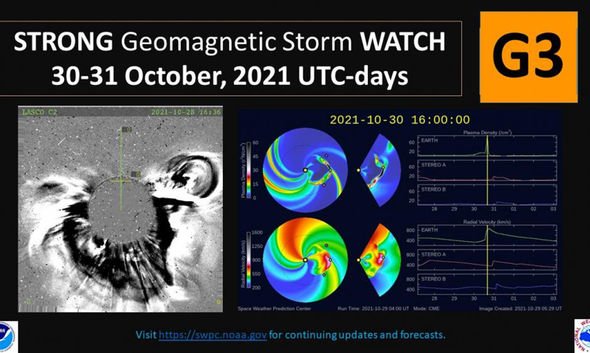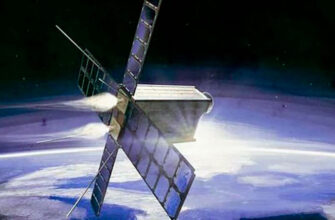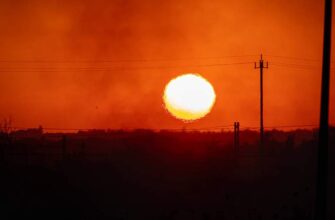The Sun, our life-giver, occasionally reminds us who`s truly in charge. Scientists are forecasting significant geomagnetic storms for September 2, 2025, a direct consequence of a powerful plasma ejection from our star. This isn`t merely a cosmic light show; it`s a critical event for our increasingly technology-dependent world.
According to the Laboratory of Solar Astronomy at the Space Research Institute (IKI) of the Russian Academy of Sciences, Earth is poised to experience geomagnetic storms ranging from G2 to G4 on the global scale, just shy of the most extreme G5 classification. This forecast, issued on August 31, 2025, follows the detection of a substantial Coronal Mass Ejection (CME) — a colossal bubble of solar plasma and magnetic field — hurled our way after an M2.76 class solar flare. The initial flare and subsequent plasma ejection were confirmed by observations from cosmic coronagraphs LASCO and CCOR-1.
Understanding the Sun`s Fury: What is a Geomagnetic Storm?
Imagine the Sun as a colossal, churning ball of hot plasma, eternally engaged in nuclear fusion. Sometimes, this activity manifests as solar flares – intense, abrupt bursts of radiation that are essentially the largest explosive events in our solar system. These flares can be accompanied by, or trigger, Coronal Mass Ejections (CMEs). A CME is essentially the Sun expelling a significant portion of its outer atmosphere, or corona, into space, carrying billions of tons of magnetized plasma at incredible speeds.
When this superheated, magnetized plasma reaches Earth, it slams into our planet`s protective magnetic field, the magnetosphere. This cosmic collision compresses and distorts the magnetosphere, injecting immense energy into it. The result is a geomagnetic storm, a global disturbance of Earth`s magnetic field. While picturesque auroras are a welcome side effect for sky-watchers, the underlying physical processes can have far-reaching implications for our technological infrastructure.
The G-Scale: Decoding Space Weather Severity
Geomagnetic storms are classified on a G-scale from G1 (minor) to G5 (extreme), providing a standardized way to communicate their potential impact. This scale helps scientists and operators of critical infrastructure understand the severity of an impending storm.
- G1 (Minor): Weak power grid fluctuations; minor impact on satellite operations. Auroras might be seen at high latitudes.
- G2 (Moderate): Potential for damage to power transformers; increased drag on low-orbit satellites. Aurora visible further equatorward than usual.
- G3 (Strong): Voltage irregularities, false alarms on protective devices in power systems. Intermittent satellite navigation problems and high-frequency (HF) radio disruptions. Aurora commonly seen at mid-latitudes.
- G4 (Severe): Widespread voltage control problems; protective systems may trip, leading to potential power grid disruptions. Significant satellite navigation degradation and prolonged HF radio blackouts. Aurora visible at lower mid-latitudes.
- G5 (Extreme): Widespread power system collapse and blackouts possible; multiple satellite failures; complete HF radio blackout globally, lasting hours to days. Stunning auroras visible at very low latitudes.
The upcoming G2-G4 storm therefore places us in the realm of “moderate to severe” potential impacts, something certainly worth paying attention to. It`s a reminder that our technologically advanced society, ironically, finds itself quite vulnerable to the whims of a star 93 million miles away.
The Ripple Effect: How a Solar Storm Touches Earth
While we`re thankfully not expecting a Carrington-level event (the most powerful recorded solar storm, which in 1859 caused telegraph systems to fail and auroras to be seen near the equator), even moderate to severe storms can cause noticeable disruptions in our hyper-connected world:
- Power Grids: Geomagnetically induced currents (GICs) in long transmission lines can overload transformers, potentially leading to widespread power outages.
- Satellites: Increased atmospheric drag can pull low-Earth orbit satellites off course. More critically, radiation can damage sensitive electronics, affecting GPS, communication, and critical weather monitoring satellites.
- Radio Communications: High-frequency (HF) radio signals, crucial for aviation, maritime, and emergency services, can be severely degraded or completely blacked out for extended periods.
- Navigation Systems: The accuracy of Global Positioning Systems (GPS) can suffer significantly, impacting everything from commercial flights and shipping to precision agriculture and smartphone navigation.
- Astronauts and Aviation: Increased radiation levels pose a risk to astronauts on the International Space Station. Passengers and crew on high-latitude polar flights may also be exposed to higher-than-normal radiation doses, leading to flight reroutes.
- The Aurora: On the brighter side (literally), geomagnetic storms intensify the aurora borealis and australis, potentially making these breathtaking celestial displays visible from much lower latitudes than usual. A beautiful, if disruptive, cosmic phenomenon.
The Unsettling Precedent: A Series of Ejections
The IKI РАН scientists have issued a specific and critical caution: the primary concern isn`t just this single, powerful ejection, but the possibility of repeated events. They draw a stark parallel to May 2024, when Earth experienced the first G5-level magnetic storms in two decades. Those extreme events, they noted, were not the result of one colossal solar explosion, but rather a sequence of medium-sized mass ejections that arrived in quick succession, amplifying the effect.
This insight suggests a Sun in a particularly active phase, indicating that subsequent flares and CMEs cannot be ruled out. Our star is, in fact, currently moving towards its solar maximum, a period of heightened activity in its approximately 11-year cycle. During this time, solar flares and CMEs become more frequent and more powerful. This makes diligent space weather monitoring not just an academic pursuit, but a critical component of modern infrastructure management and global preparedness.
Monitoring the Celestial Fury: A Global Effort
Institutions worldwide, from Russia`s IKI РАН to the U.S.`s NOAA Space Weather Prediction Center and NASA, constantly monitor the Sun with an unwavering gaze. Using an array of sophisticated ground-based observatories and space-based instruments like the LASCO and CCOR-1 coronagraphs mentioned by the Russian scientists, they track solar activity and meticulously model the trajectory of CMEs. These efforts provide crucial lead times, often hours or even days, allowing for mitigation strategies to be put in place, such as rerouting flights, adjusting satellite orbits, or preparing power grids for potential surges. It’s a testament to human ingenuity in the face of cosmic indifference.
Conclusion: A Cosmic Reminder
As September 2, 2025, approaches, we are reminded of our planet`s intricate and often dramatic connection to its parent star. The impending geomagnetic storms serve as a potent, if somewhat inconvenient, reminder that while we`ve mastered much on Earth, some forces remain firmly in the cosmic domain, beyond our direct control. Our best defense lies in advanced scientific observation, meticulous preparedness, and a healthy respect for the unpredictable temperament of the Sun. So, as you prepare for the week, perhaps keep an eye on the skies – and certainly on the reports from our diligent space weather scientists. It promises to be an electrifying start to September, in more ways than one.









